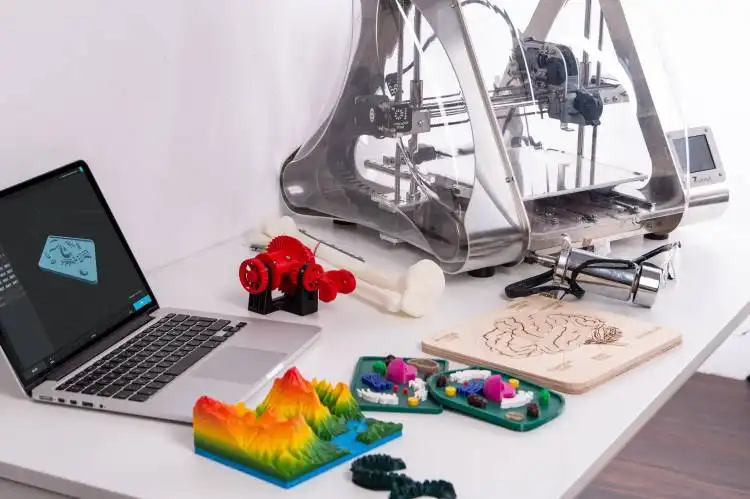Start an Art Consulting Business
Painting Dreams into Reality: The Power of an Art Consulting Business
| Updated


ART CONSULTING BUSINESS
Step right into the colorful and dynamic world of an Art Consulting Business! This delightful endeavor will have you diving into the depths of art culture, helping individuals or corporations choose and acquire art that best suits their tastes and spatial aesthetics. With your informed guidance, blank walls transform into conversation starters, as art becomes an integral part of their environment. With this business, you're not just decorating spaces; you're breathing life into them with the power of art!
Jump to Business Plan
RELATED BUSINESS IDEAS
Browse ALL Design & Creative Enterprises Business Ideas
Discover Your Perfect Domain
Unlock the door to your online success with our hand-picked selection of premium domain names. Whether you're starting a new venture or rebranding an existing one, the right domain can set the tone for your digital presence. Browse through our curated list, each with its unique potential to enhance your brand's visibility and credibility.
ART CONSULTING MINI BUSINESS PLAN
This a quick reality check to help you identify the strengths and weaknesses of your business concept before you dive in.
Business Analysis: Art Consulting
Expected Percent Margin:
- Gross Margin: 20-30%
- Net Profit Margin: 10-20%
Earnings Expectations:
- Daily Earnings: $100 - $300
- Weekly Earnings: $500 - $1,500
- Monthly Earnings: $2,000 - $6,000
- Annual Earnings: $24,000 - $72,000
Actions to Hit Those Numbers:
Networking and Relationship Building:
- Artists Relations: Regularly attend art fairs, exhibitions, and openings to meet artists & understand latest trends.
- Client List: Target corporate clients, hotels, hospitals who may need art consultancy services.
Marketing and Client Acquisition:
- Online Presence: Craft a professional website and maintain active social media accounts.
- Local Community: Connect with local art communities to promote your services.
Client Servicing:
- Project Management: Take up 1-2 big projects at a time with an average fee of $5000 - $15,000 per project.
- Negotiation Skills: Art consultants negotiate prices between artists and buyers- strong negotiation skills will reduce acquisition costs and increase margins.
Cost Control:
- Operate Virtually: Reduce overhead costs by operating from a home office and meeting clients at the art sourcing locations.
- Associates: Instead of hiring full-time employees, partner with freelance associates & pay them a project-based fee.
Business Operations:
- Hours: You decide your hours but most networking events usually happen on evenings or weekends.
- Project Volume: Aim for on-going contracts with corporate clients, or 4 - 6 big projects per year.
Remember that, as an art consultant, your reputation is paramount. Deliver high-quality service and maintain good relationships with both artists and clients to ensure repeat business. These are generalized estimations and can vary depending on your network, location, and business strategies. Always consult with a financial advisor for personalized advice.
NOT WHAT YOU HAD IN MIND? Here are more ideas



Browse ALL Design & Creative Enterprises Business Ideas
Grab Your Business Website Name
Before you get caught up in the whirlwind of setting up your business, invest in a domain name. It's a small but significant step that lays the foundation for your brand and makes it easier for customers to find and trust you. Just like you wouldn't build a house without securing the land first, don't build a business without securing your domain name.
"Why? Can't that wait?" Here's why it shouldn't
Step 1: Determine if Starting an Art Consulting Business is Right for You
Breakdown of Startup Expenses
Before starting an art consulting business, it is important to understand the startup costs associated with the business. This includes costs associated with registering the business, obtaining a business license, and any other legal fees. Additionally, there may be costs associated with renting office space, purchasing equipment, and hiring staff. It is important to understand the full scope of startup costs before beginning the business.
Breakdown of Ongoing Expenses
Once the business is up and running, there are ongoing expenses to consider. This includes costs associated with marketing, advertising, and other promotional activities. Additionally, there may be costs associated with maintaining a website, paying for software, and other technology-related expenses. It is important to understand the full scope of ongoing expenses before beginning the business.
Examples of Ways to Make Money
Once the business is up and running, there are a variety of ways to make money. This includes providing art consulting services to clients, selling artwork, and providing art classes. Additionally, there may be opportunities to partner with other businesses, such as galleries and museums, to provide art consulting services. It is important to understand the full scope of ways to make money before beginning the business.
Step 2: Name the Business
When naming a business, it is important to come up with something that is memorable and easy to remember. It should also be something that reflects the services that the business will provide. Consider using a combination of words that evoke the services that will be offered, such as “Art Consulting” or “Art Advisory.” Additionally, consider using a play on words that is related to the art industry, such as “The Artful Advisor” or “The Art of Consulting.” It is also important to make sure that the name is not already in use by another business. It is a good idea to search the internet to make sure that the name is unique and not already taken. Additionally, it is important to check with the local government to make sure that the name is not already registered with the state. Once the name has been chosen, it is important to register the name with the local government and to obtain any necessary permits or licenses. Finally, it is important to register the business name with the IRS and to obtain an Employer Identification Number (EIN). This will allow the business to open a business bank account and to file taxes.
Step 3: Create a Business Plan
Creating a business plan is an important step in starting an art consulting business. It should include a mission statement that outlines the purpose of the business, a market analysis that identifies the target market and potential customers, and a financial plan that outlines the startup and ongoing expenses. It should also include a marketing plan that outlines the strategies for promoting the business and a management plan that outlines the roles and responsibilities of each team member.
How to Write the Business Plan
Writing a business plan can be a daunting task, but there are many resources available to help. The Small Business Administration (SBA) offers free business plan templates and advice on how to write a business plan. Additionally, there are many online resources and books that provide guidance on how to write a business plan. It is important to take the time to research and understand the different components of a business plan before beginning to write.
Where to Get Help
In addition to the resources offered by the SBA, there are many organizations that offer assistance with writing a business plan. Local Small Business Development Centers (SBDCs) provide free or low-cost counseling and training to help entrepreneurs create a business plan. Additionally, there are many online resources and books that provide guidance on how to write a business plan. It is important to take the time to research and understand the different components of a business plan before beginning to write.
Step 4: Register Your Business
Registering your business is an important step in starting an art consulting business. Depending on the type of business you are starting, you may need to register with the state or federal government. In most cases, you will need to register with the state in which you plan to operate. This process typically involves filing paperwork and paying a fee. Additionally, you may need to obtain a business license or other permits in order to legally operate your business.
Benefits of Registering Your Business
Registering your business provides a number of benefits. It allows you to legally operate your business and gives you the ability to open a business bank account, obtain business loans, and enter into contracts. Additionally, registering your business can help to protect your personal assets and provide you with legal protection in the event of a lawsuit.
Cost of Registering Your Business
The cost of registering your business varies depending on the type of business you are starting and the state in which you are registering. Generally, the cost of registering a business is relatively low, ranging from $50 to $200. Additionally, many states offer discounts or waivers for small businesses or those that are just starting out.
Resources for Registering Your Business
There are a number of resources available to help you register your business. Your local Small Business Administration (SBA) office can provide you with information and guidance on how to register your business. Additionally, many states offer online resources that provide step-by-step instructions on how to register your business. Additionally, there are a number of online services that can help you register your business quickly and easily.
Step 5: Obtain Necessary Licenses and Permits
In order to start an art consulting business, you will need to obtain the necessary licenses and permits. Depending on the state and local regulations, you may need a business license, a seller’s permit, a zoning permit, and a tax identification number. Additionally, you may need to obtain a professional license if you plan to provide advice and services to clients. It is important to research the regulations in your area to determine what licenses and permits you need.
How to Obtain Licenses and Permits
Once you have determined what licenses and permits you need, you can begin the process of obtaining them. You can usually apply for the necessary licenses and permits online or in-person at your local government office. You may need to provide documentation such as proof of identity, proof of address, and proof of business formation. Additionally, you may need to pay a fee for each license or permit you obtain. It is important to make sure that you have all of the necessary licenses and permits before you start operating your business.
Benefits of Obtaining Licenses and Permits
Having the necessary licenses and permits can help you to run your business legally and protect you from any potential legal issues. Additionally, having the proper licenses and permits can help to legitimize your business and make it more attractive to potential clients. Obtaining the necessary licenses and permits can also help to ensure that you are in compliance with local and state regulations.
Step 6: Open a Business Bank Account
Opening a business bank account is an important step for any business. It allows you to separate your personal finances from your business finances, which is important for tax purposes. To open a business bank account, you will need to provide the bank with your business name, EIN (Employer Identification Number), and other information. You may also need to provide a copy of your business license or other documents. Once you have opened the account, you will need to make sure to keep track of all deposits and withdrawals.
Benefits of a Business Bank Account
A business bank account offers many benefits, including the ability to easily track business expenses and income. It also provides a way to keep your personal finances separate from your business finances. Additionally, a business bank account can help you establish a good credit history for your business, which can be beneficial when applying for a loan or other financing. Finally, having a business bank account can make it easier to manage payroll and other expenses.
Step 7: Set Up Accounting System
Setting up an accounting system is an important step in starting an art consulting business. It is important to have a system in place to track income and expenses, as well as to manage taxes. An accounting system can be as simple as using a spreadsheet or as complex as using a professional accounting software.
When setting up an accounting system, it is important to consider the type of business, the size of the business, and the amount of transactions that will be processed. It is also important to consider the type of information that needs to be tracked, such as income, expenses, and taxes.
For a small business, a spreadsheet can be used to track income and expenses. This can be done manually or with an online spreadsheet program. For larger businesses, a professional accounting software may be necessary. There are many different types of accounting software available, so it is important to research the options and choose the one that best meets the needs of the business.
When setting up an accounting system, it is important to create a chart of accounts. This is a list of all the accounts that need to be tracked, such as income, expenses, and taxes. It is also important to set up a system for tracking payments and deposits, as well as a system for reconciling accounts.
Finally, it is important to ensure that the accounting system is secure and that all financial information is kept confidential. This is especially important for businesses that handle sensitive customer information.
Step 8: Market Your Business
When it comes to marketing your art consulting business, there are a few different ways you can go about it. You can use traditional methods such as print advertising, radio, and television, or you can use more modern methods such as social media, email campaigns, and search engine optimization. You can also use more creative methods such as attending art shows, networking with other art consultants, and creating a blog or website to showcase your services.
Tips for Effective Marketing
When it comes to marketing your art consulting business, it’s important to focus on the right audience. You should target potential clients who are interested in art and have the means to pay for your services. You should also create a unique brand identity that sets you apart from other art consultants. Additionally, you should focus on creating content that is relevant to your target audience and that will help you build relationships with potential clients. Finally, you should track your marketing efforts to see what’s working and what’s not.
Step 9: Hire Employees
When it comes to hiring employees for your art consulting business, you want to make sure that you are hiring the right people for the job. Start by creating a job description that outlines the duties and responsibilities of the position. You should also include the qualifications and skills that you are looking for in a potential employee. Once you have the job description ready, you can start looking for employees. You can use job boards, social media, and word of mouth to find potential candidates.
Training Employees
Once you have hired the right employees, you need to make sure that they are properly trained. This includes training them on the basics of art consulting, such as how to assess artwork, how to properly display artwork, and how to provide advice to clients. You should also provide them with any relevant information about the business, such as the company’s mission and values. Finally, you should provide them with any necessary tools or resources that they may need to do their job.
Establishing Policies
In order to ensure that your employees are working in a safe and productive environment, you should establish policies for them to follow. This includes policies on how to handle customer complaints, how to handle artwork, and how to handle confidential information. You should also establish policies on how to handle payment and how to handle disputes between customers and employees.
Evaluating Performance
Finally, you should establish a system for evaluating the performance of your employees. This can include setting goals for them to reach, providing feedback on their performance, and rewarding them for meeting or exceeding expectations. You should also provide them with regular performance reviews to ensure that they are meeting the standards that you have set for them.
EXPLORE MORE CATEGORIES
Browse ALL Business Idea Categories
TAKE THE NEXT STEPS










